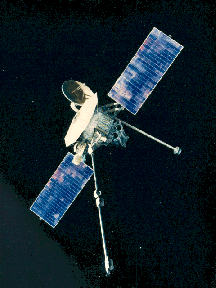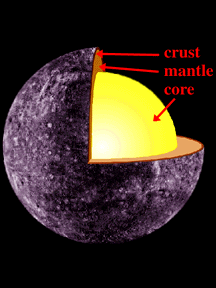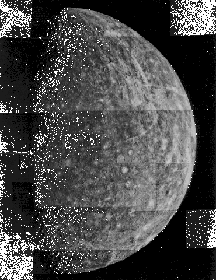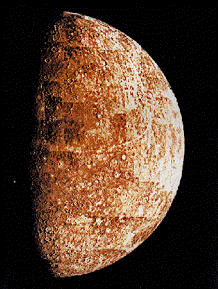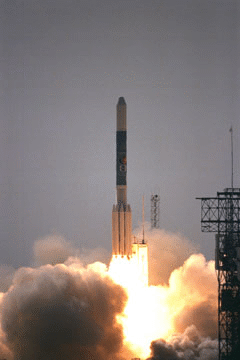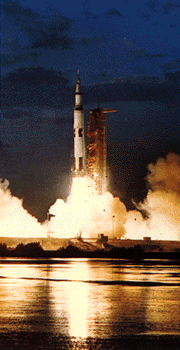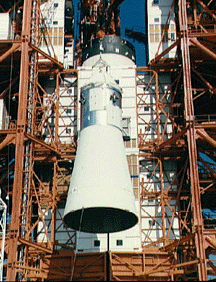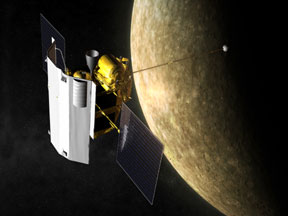
Image courtesy NASA/Johns Hopkins University Applied Physics Laboratory/Carnegie Institution of Washington.
MESSENGER Mission to Mercury
MESSENGER (MErcury Surface, Space ENvironment, GEochemistry, and Ranging) is the name of a spacecraft that will study Mercury; the planet closest to the Sun. MESSENGER is scheduled for launch from Cape Canaveral Air Force Station in Florida in early August 2004. After flying by Mercury three times, the spacecraft will go into orbit around the planet in March 2011. MESSENGER will study Mercury from orbit for about one year.
Only one other spacecraft has ever visited Mercury! Mariner 10 flew past this hot planet three times in 1974 and 1975. Because Mariner 10's flybys were all on the same side of Mercury, it was able to map slightly less than half of the planet's surface. One of the main goals of the MESSENGER mission is to complete the job of mapping the entire surface of Mercury by capturing high resolution images of the planet's surface.
MESSENGER will investigate some of Mercury's other mysteries. Mercury is the densest planet and has a large core relative to the planet's overall size. The spacecraft will measure the planet's gravity and its magnetic field, which will help us learn more about its interior structure. MESSENGER will also explore the composition of the materials on Mercury's surface, which will help us understand the formation and history of this small planet. Strange as it may seem, some scientists think there may be ice on Mercury, hiding from the intense heat of the nearby Sun in the forever shaded bottoms of large craters near the planet's poles. MESSENGER's instruments will tell us whether water ice is really to be found in this most unlikely location.
MESSENGER will follow a roundabout route on its trip to Mercury. In order to save fuel (and to keep the cost of the mission low), the spacecraft will fly past Earth in August 2005 and past Venus twice, in October 2006 and June 2007. Each planetary flyby will help steer MESSENGER's trajectory towards Mercury as the gravity of the planets alters the spacecraft's course. Finally, MESSENGER will fly past Mercury three times (January 2008, October 2008 and September 2009) before settling into orbit around the planet in 2011.
The Sun is about eleven times brighter, and hotter, in the neighborhood of Mercury than it is near Earth. MESSENGER's flight systems and instruments had to be carefully designed and tested to ensure that they could survive the incredible heat. The spacecraft also carries a sunshade to shelter it from the intense sunlight, much as beachgoers use umbrellas to mitigate the heat on a summer afternoon.






